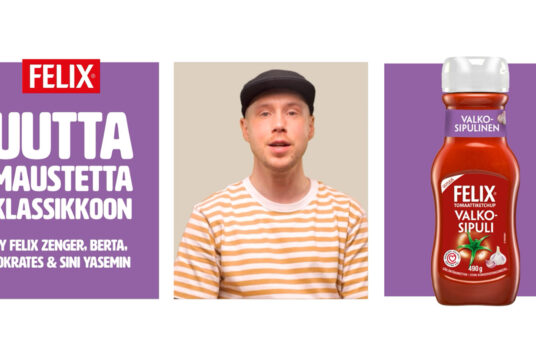The cookieless era is approaching faster than we realize. At the same time, the digital advertising ecosystem is undergoing strong and permanent change. We still don’t know exactly when Google will finally remove third-party cookies or what solutions in the post-cookie world will be winning. But many signs and directions for change are already visible. Dagmar Drive’s Digital Strategist Miikka Rahikainen built a clear roadmap for marketers on how to start the transformation journey – today.
Google announced in March 2021 that it would not replace third-party cookies with an alternative identity solution. All efforts are directed to the development of the Privacy Sandbox solution. This is not entirely true, as Google will keep the identifiers of Android devices, for example, enabled. A more correct wording would be that Google will not in future offer an identity solution that is accurate to an individual user for use by other actors.
At the same time, Google stated that it will not hinder the development of alternative, third-party identity solutions. For example, the back door was left open for theTradeDesk’s Unified ID 2.0 identity solution, where an email address encrypted with a hash function acts as the user’s key. Many other similar solutions also envisage using an encrypted user email address.
WHAT IS PRIVACY SANDBOX?
Privacy Sandbox is an API-based method introduced by Google to replace third-party cookies. FloCs (FLoCs, Federated Learning of Cohorts) has generated the most discussion. Their idea is to store the user’s interest segments directly in the browser, where the advertiser can retrieve them through the interface. In other words, direct behaviour data would no longer be stored in a DMP system, for example, but existing segments would be searchable by advertisers from the interface. In Google’s model, advertising would always be done on ready-made, interest-based segments. The interest segments would always be modeled, so the data protection of the individual user would be in order in this regard.
For remarketing, there would be a solution where the programmatic buying ad auction per user would take place in the user’s browser (FLEDGE). There are still many remarketing solutions on the table. Hopefully, we will be able to test them properly this year.
HOW SHOULD ADVERTISERS START PREPARING NOW?
Teknisten ratkaisujen osalta on vielä paljon avoimia kysymyksiä, mutta on myös monia teemoja, joita kannattaa jo lähteä rakentamaan.
A. BUILD PLANS AND ROADMAP FOR FIRST-PARTY DATA COLLECTION.
The value of first-party data increases. Now is a good time to take care of its collection, processing and consent information.
- Determine the benefits to the customer from sharing data and how good examples can be used to prove the benefits and improved customer experience.
For example, different pricing solutions for authenticated users or pre-emption rights can be good options for committing customers to login. - Determine how data is collected responsibly and transparently.
How the customer clearly gives their consent and can change it if they wish, for example in the self-service portal. - Assign a clear role to CDP (Customer Data Platform) and start pinning new channels on marketing automation.
In this way, treatment models can be implemented through multiple channels with CDP.
B. BUILD NEW PARTNERSHIPS WITH MEDIA AND DATA PROVIDERS AND DEVELOP A CONTEXTUAL TARGETING STRATEGY.
- Gather the most relevant contexts and start testing how advertising results compare between cookie data and pure context.
You’ll have time to collect good test data while conversions can still be collected in Google’s Chrome browser. - Build strategic partnerships with key media, technology vendors, and data providers already in your current targeting model.
Start building capabilities to use alternative ID, such as email-based ID, solutions with partner media and data providers. - Rethink your entire advertising targeting strategy. Firmly anchor new partnerships and context in the new model.
C. DEVELOP MARKETING MEASUREMENT AND BOLDLY TEST “DATA CLEAN ROOM” MODELS FOR CLOSED GARDENS.
- Consider alternatives to attribution models. Does the current ROMI modelling also provide enough information for optimizing digital advertising, or does it need its own more accurate model?
- Test and build data pipelines for closed garden “Data Clean Room” services.
In the coming years, these services will take on a greater role in marketing measurement. The advertiser can access aggregated advertising data from the platforms and combine their own segments with this data. For example, Google Ads Data Hub and Amazon Marketing Cloud are worth exploring right away. - Gather lessons from current working models and test new ways of working.
In environments where data can still be collected with the help of cookies.
AUTHOR

Martech Director
LinkedIn
Miikka is Martech Director, with a special expertise in marketing technology. He spends his free time with various sports, both traditional and electronic.
More on topic
-
 Felix Garlic Ketchup refreshed the whole brand on TikTok – “The best ad I’ve seen”When the iconic Felix ketchup, beloved by families with children, decided to charm Generation Z…See our work
Felix Garlic Ketchup refreshed the whole brand on TikTok – “The best ad I’ve seen”When the iconic Felix ketchup, beloved by families with children, decided to charm Generation Z…See our work -
 Vattenfall’s B2B website is clearer and more readableThe collaboration between Dagmar and Vattenfall‘s B2B marketing Energyplaza started already in November 2023. We…See our work
Vattenfall’s B2B website is clearer and more readableThe collaboration between Dagmar and Vattenfall‘s B2B marketing Energyplaza started already in November 2023. We…See our work -
 Accessibility and SEO: Success Factors in the Digital WorldAccessibility is an increasingly critical part of a website’s functionality and user experience. Although accessibility…Read the blog
Accessibility and SEO: Success Factors in the Digital WorldAccessibility is an increasingly critical part of a website’s functionality and user experience. Although accessibility…Read the blog